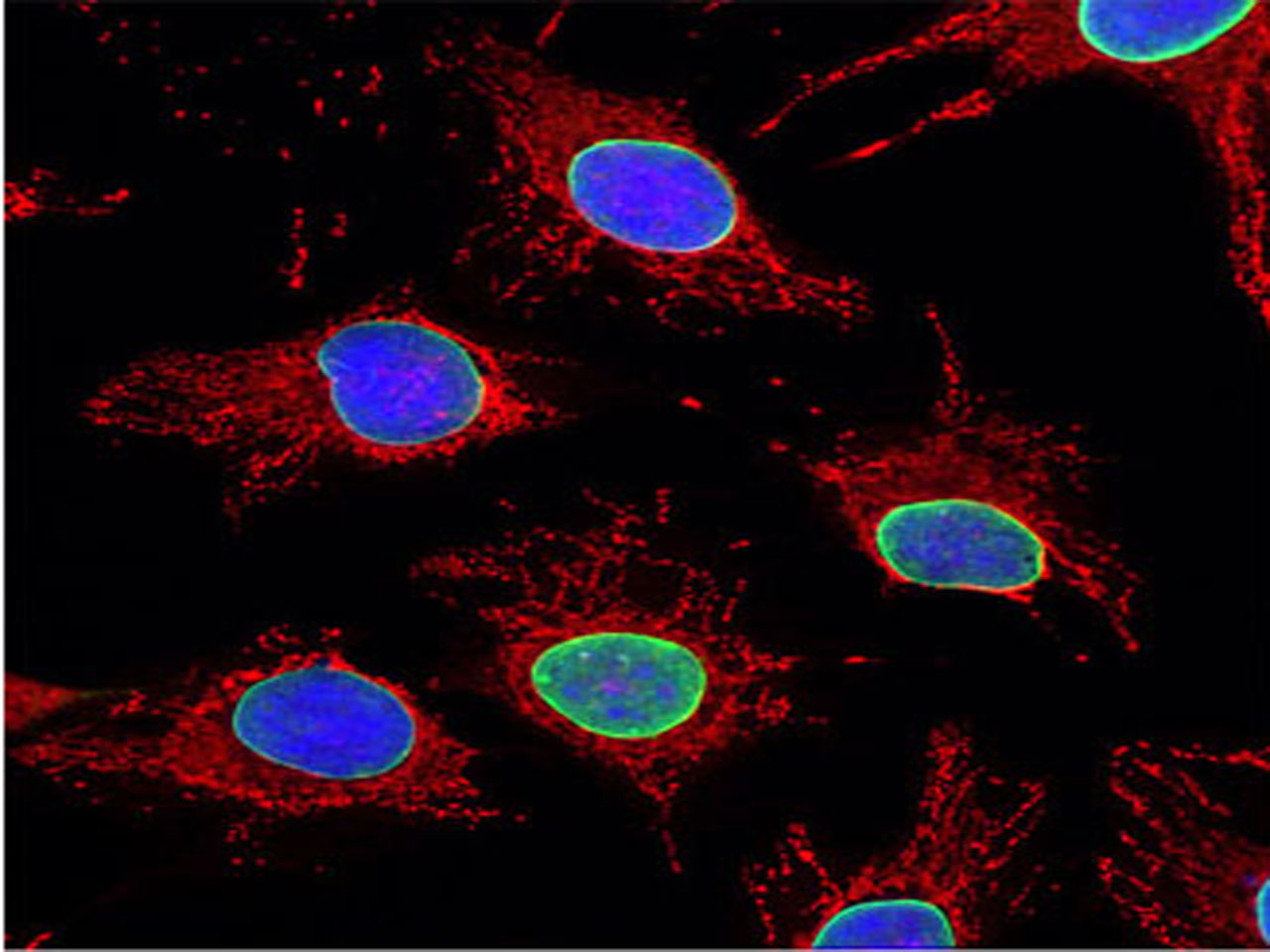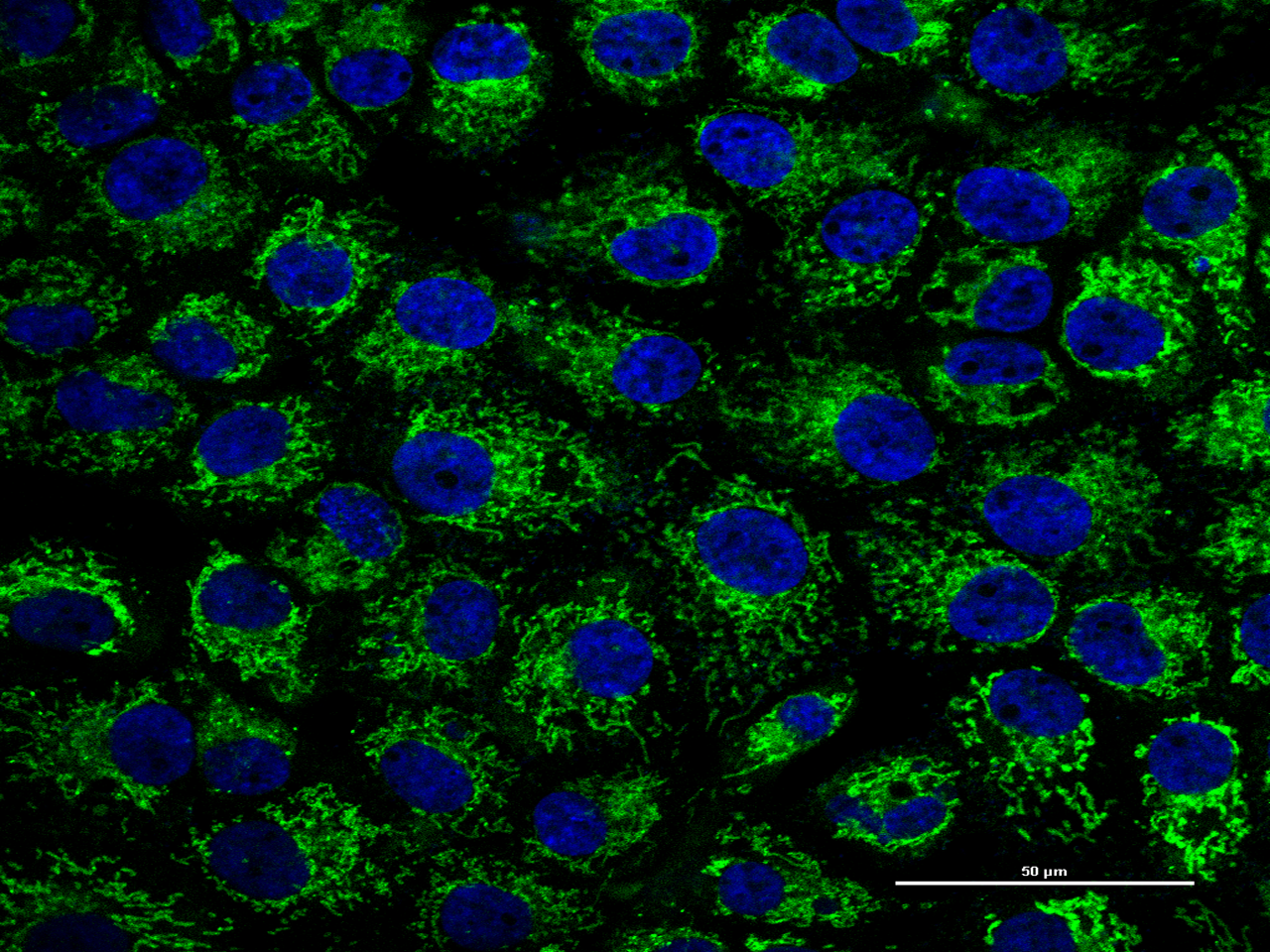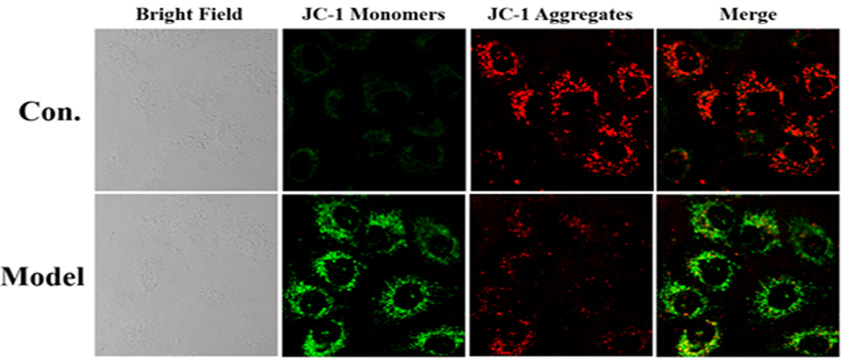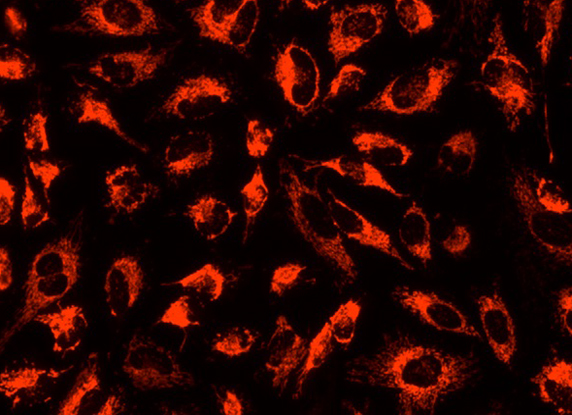Basic Information
Product name | Mitochondrial Tracker (Red) |
Size | 50 μg/20 x 50 μg |
Storage | -20℃, keep away from light |
Shipping | Shipped with ice pack |
Validity | 12 months |
Mitochondrial Tracker (Red) Excitation/Emission Wavelength: 579/599 nm
Product Introduction
Mitochondrial Tracker (Red) is a red fluorescent dye containing a chloromethyl functional group,which can be used to label mitochondria. Mitochondrial Tracker (Red) can passively diffuse across the cell membrane and directly accumulate in active mitochondria simply by incubation with live cells. The accumulation of this dye depends on the membrane potential. Once the mitochondria are stained, they can be fixed with aldehyde fixatives according to the requirements of subsequent experiments. For experiments such as immunohistochemistry and in situ hybridization, cells need to be permeabilized first, and Mitochondrial Tracker (Red) can also stain the mitochondria of permeabilized cells. This dye is suitable for double-labeling experiments, as its red fluorescence can be well distinguished from other green fluorescent probes. Although traditional mitochondrial fluorescent probes such as TMR and rhodamine 123 can also easily accumulate in functional mitochondria, they will be washed away once the mitochondrial membrane potential is lost. This limits their application in experiments that require aldehyde fixation of cells or involve factors affecting mitochondrial energy status.
Reagent Preparation
Preparation of stock solution
Dissolve in high-purity anhydrous DMSO and prepare a stock solution with a concentration of 1 mM . The molecular weight of the dye is 531.5 g/mol . Simply adding 94 µL of DMSO to 50 µg of Mitochondrial Tracker (Red) obtain a 1 mM stock solution of the powder.
Note: ① Before opening the reagent tube, the product needs to be returned to room temperature.
② The storage solution can be divided into small tubes according to the single usage amount and stored at -20℃ away from light to avoid repeated freezing and thawing.
Preparation of working fluid
The dye concentration varies according to different cells and experimental requirements. The following operating conditions are for reference only and can be adjusted according to cell types and other relevant factors such as such as permeabilization of cells or tissues.
Dilute the 1 mM stock solution to the working concentration with an appropriate buffer (such as PBS) or cell culture medium. A general recommended concentration range is 25-500 nM.
For samples that require fixation or permeabilization in subsequent steps, a working concentration of 100-500 nM is recommended. To minimize potential artifacts and mitochondrial toxicity caused by overloading, the staining solution concentration should be reduced as much as possible without affecting the experimental results. Additionally, higher concentrations may also stain other cellular structures.
Note: Since oxidases in the culture medium can weaken the effect of the dye, it is not recommended to use complete culture medium to dilute the stock solution in this protocol.
Note
1. All fluorescent dyes have quenching problems. Please try to avoid light to slow down fluorescence quenching.
2. To avoid repeated freezing and thawing, this product can be repacked into small quantities.
3. This product is For Research Use Only, Not for Diagnostic Use.




